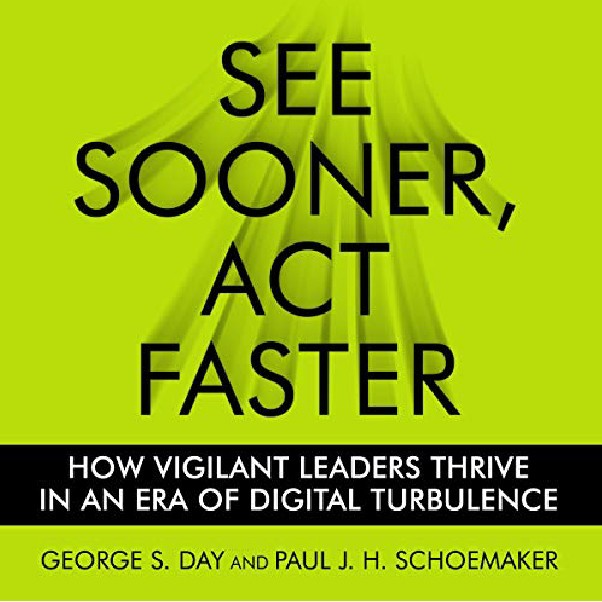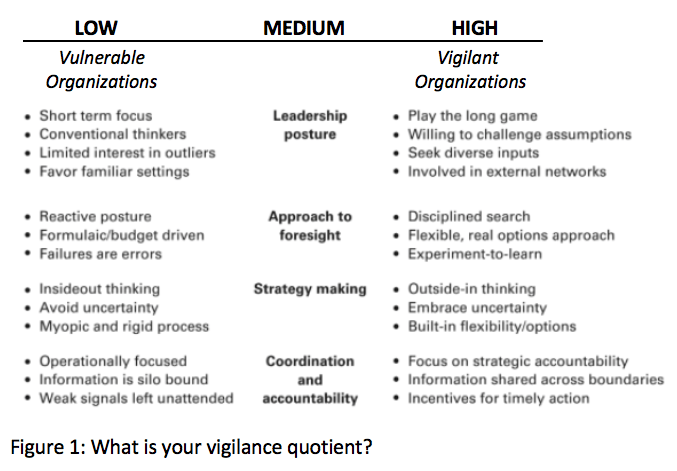Vigilance in the Midst of Fundamental Changes
Reviewer
Dr. Mike Boehlje, Distinguished Professor Emeritus
Book
See Sooner, Act Faster: How Vigilant Leaders Thrive in an Era of Digital Turbulence
Summary
Even before COVID-19, the food production and distribution industries were facing a time of significant turbulence, and the pandemic has only added unprecedented disruption and chaos. Making critical strategic decisions to maintain and enhance profitability and position for the future has always been difficult, but with increased uncertainty, risk aversion increases and strategic decision-making typically becomes more short-term survivability focused, as well as more ad hoc and less analytical.
In their book See Sooner, Act Faster: How Vigilant Leaders Thrive in an Era of Digital Turbulence, Day and Schoemaker provide a framework for more analytical thinking and decision-making, not just in a time of digital turbulence which certainly characterizes today’s agriculture, but in times of other dramatic changes in the industry, such as new disruptive technology, business models, and industry structures and linkages.
Day and Schoemaker argue that vigilance is the antidote to vulnerability in turbulent times. Figure 1 summarizes their perspective of the important differences between vigilant and vulnerable organizations in terms of leadership posture, approach to foresight, strategy making, and coordination and accountability. In essence, vigilant organizations have leaders who are long-term focused and challenge assumptions about the future. Their approach to foresight of the future is to implement disciplined experiments to learn so as to determine what does and does not work. Their strategy embraces uncertainty with built-in flexibility, and their management team openly shares information and is held accountable for actionable strategic choices. 
The key tasks of vigilance are sensing, probing and interpreting weak signals. Vigilance fosters and enhances agility to anticipate changes in the business environment, market conditions and customer behavior and expectations to sense change and seize opportunities or protect positions sooner than rivals. Critical to vigilance is attention of the key members of the management team to the changes in the business climate and market conditions so as to sort through the data/information overload and separate signals from noise. This can be best accomplished by asking the right questions and listening to outside/external sources, as well as gathering information from within the company.
Vigilance also requires tackling ambiguity by probing and learning, exploring divergent views from inside and outside the organization, and developing and evaluating multiple scenarios about the future. Finally, the sensing and analysis activity must be followed by timely action, including running trial and error experiments, investing in multiple strategic options (actions that have limited downside exposure but substantial upside potential either financially or in “learning by doing”) and partnering with others to enhance learning and reduce financial risk exposure.
What this means for Food and Agricultural Business
So what are the implications and applications of this framework and mental model for food and agribusiness firms? The food production and distribution system is in the midst of fundamental changes, including realignment and restructuring of supply chains to be more resilient and reliable; increased consolidation and structural changes and the development of new digitally-driven business models; digitization of almost all activities and processes with broader adoption of automation; new disruptive technologies that combine ideas and concepts from different science bases, such as nanotechnology, materials science, electrification 3D printing, biological, etc.; and an increased focus on system performance in terms of efficiency and flexibility/adaptability, rather than just individual firm efficiency and profitability.
The uncertainties resulting from these changes are disrupting the traditional ways of doing business in this industry. Day and Schoemaker’s book provides useful insights into how to be vigilant to these changes rather than vulnerable to their consequences.
RELATED POSTS:
Optimizing Sales Management: Knowledge, Coaching and Continuous Improvement
While we used to think that exceptional salespeople possessed an innate gift, recent data suggests the impact of today’s sales managers in nurturing and refining this gift to unlock its fullest potential.
A great moment for value-based sales in agribusiness
Value-based sales can empower companies to craft compelling value propositions, understand the customer’s business model and effectively communicate to stakeholders.
How can big data empower the development of new products?
Data is one of the most powerful resources for a company. It enables accurate decision-making and minimizes risk, ensuring greater revenue and sustainable growth.
